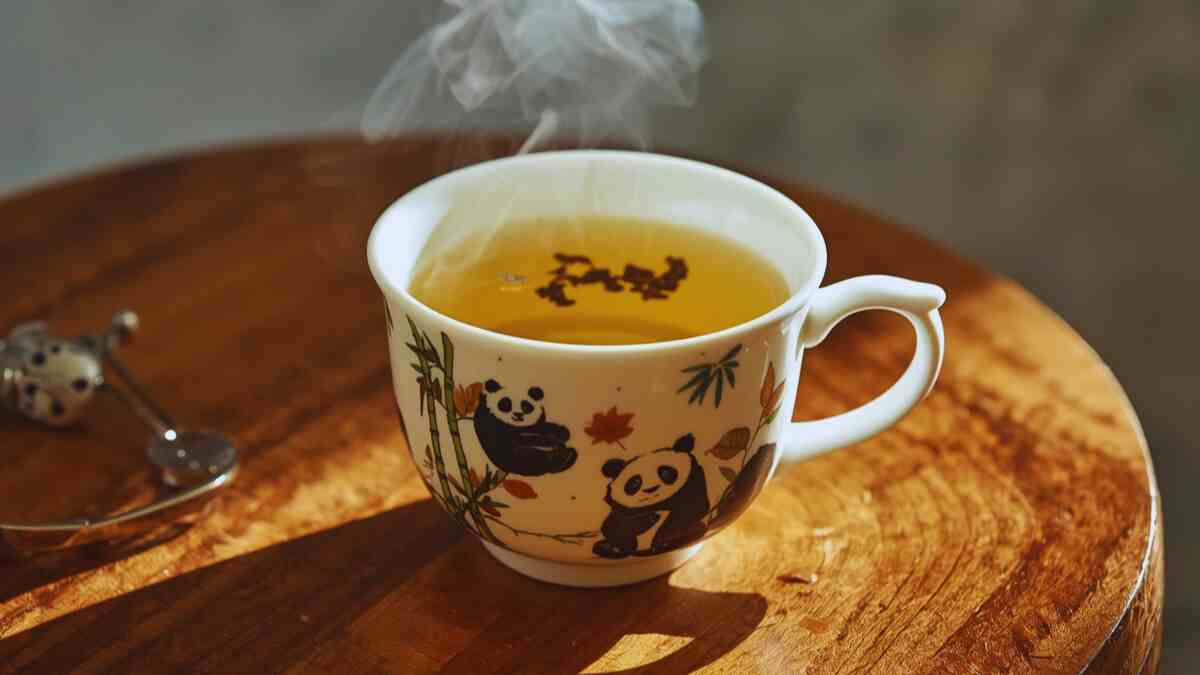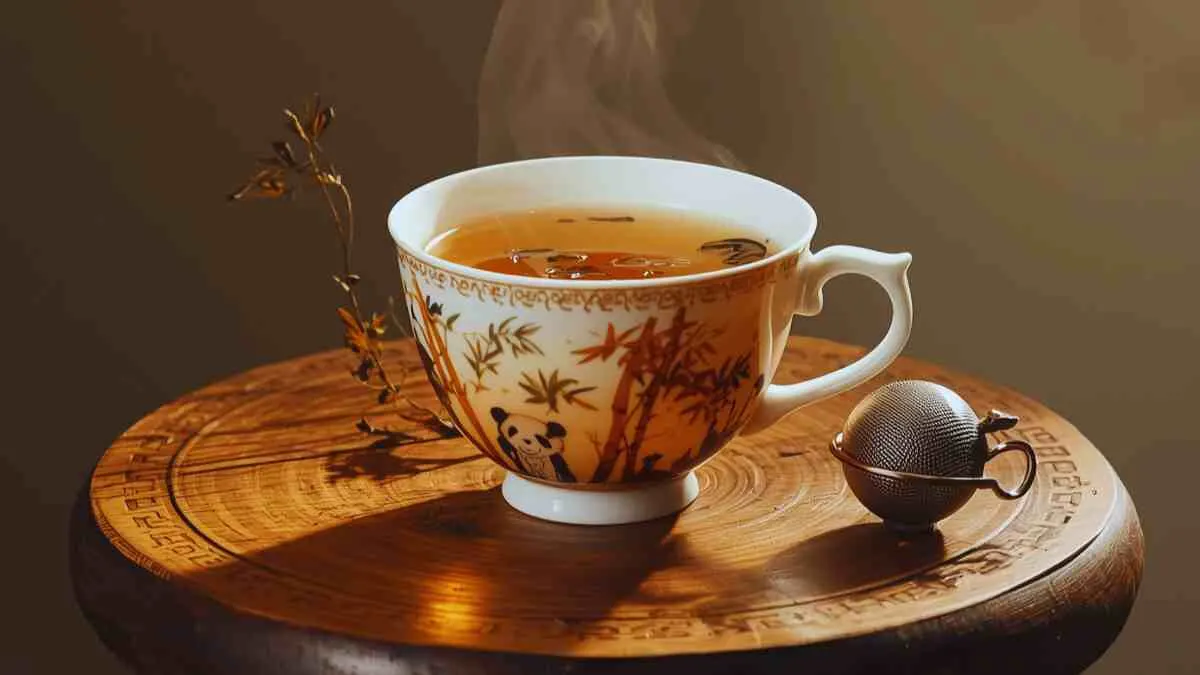Panda tea, also known as panda dung tea, is a unique and controversial beverage produced in the Ya’an mountainous region of Sichuan, China.
This tea is fertilized using the excrement of giant pandas, aiming to create an organic and eco-friendly product. While the concept garnered international attention, it also sparked debates regarding its authenticity, pricing, and environmental implications.
Origins and Production:

The inception of panda tea dates back to 2012 when An Yanshi, a local entrepreneur and wildlife expert, introduced the idea of using panda dung as fertilizer for tea cultivation.
Pandas consume bamboo and absorb only about 30% of the nutrients, with the remaining 70% excreted. An believed that utilizing this nutrient-rich dung would enhance the quality of the tea leaves. The first batch was produced in Ya’an, Sichuan province, and marketed as the world’s most expensive tea, priced at approximately $3,500 for 50 grams Reuters.
Brewing Panda Tea | Step By Step:
Ingredients:
-
1–2 teaspoons of dried panda tea leaves
-
1 cup of water
-
Optional: honey, lemon, or a cinnamon stick for added flavor
Instructions:
-
Boil Water: Heat 1 cup of water to just below boiling point (around 80–85°C).
-
Prepare Tea Leaves: Place the dried panda tea leaves into a teapot or infuser.
-
Steep: Pour the hot water over the leaves and let them steep for 3–5 minutes.
-
Serve: Strain the tea into a cup. Add honey, lemon, or a cinnamon stick if desired. Serve hot or chilled.
Health Benefits:
Proponents of panda tea claim that the unique fertilization process imparts additional health benefits:
-
Antioxidant Properties: The nutrients from bamboo in the panda dung are believed to enhance the antioxidant content of the tea.
-
Digestive Health: As with other green teas, panda tea may aid in digestion and promote gut health.
-
Anti-inflammatory Effects: The compounds present in the tea are thought to have anti-inflammatory properties.
However, these claims lack substantial scientific evidence, and experts have expressed skepticism regarding the actual health benefits Wikipedia.
Controversies and Criticisms:
The introduction of panda tea was met with mixed reactions:
-
Pricing: The steep price tag of $3,500 for 50 grams raised eyebrows, with some questioning the justification for such an expense.
-
Scientific Scrutiny: Experts from the Chinese Academy of Sciences and other institutions have criticized the lack of scientific evidence supporting the health claims associated with panda tea China Daily.
-
Environmental Concerns: While the use of panda dung as fertilizer is seen as an innovative recycling method, concerns about the sustainability and ethics of using animal excrement in food production have been raised.
Take Away:
Panda tea stands as a testament to human creativity and the quest for unique products. While it has captured the imagination of many, it also serves as a reminder of the importance of scientific validation and ethical considerations in product development. Whether a novelty or a genuine health elixir, panda tea continues to intrigue and provoke discussion.
Recommended: Spearmint Tea | A Refreshing Way to Boost Wellness
Common Questions:
Q1: Is panda tea safe to drink?
Yes, panda tea is produced under controlled conditions, and the use of panda dung as fertilizer is regulated. However, as with any specialty product, it’s essential to ensure it meets health and safety standards.
Q2: Where can I purchase panda tea?
Panda tea is primarily sold in China, particularly in Sichuan province. International availability may be limited, but some specialty tea retailers might offer it online.
Q3: Does panda tea taste different from regular green tea?
Panda tea is described as having a smooth and fragrant flavor, similar to high-quality green teas. The unique fertilization process is not believed to alter the taste significantly.
Q4: Are there any proven health benefits of drinking panda tea?
While panda tea contains antioxidants and other beneficial compounds, there is no scientific evidence to support the specific health claims associated with its unique fertilization method.
Q5: Why is panda tea so expensive?
The high cost is attributed to the labor-intensive production process, the rarity of the tea, and the novelty of using panda dung as fertilizer. Additionally, a portion of the proceeds is claimed to support environmental conservation efforts.

